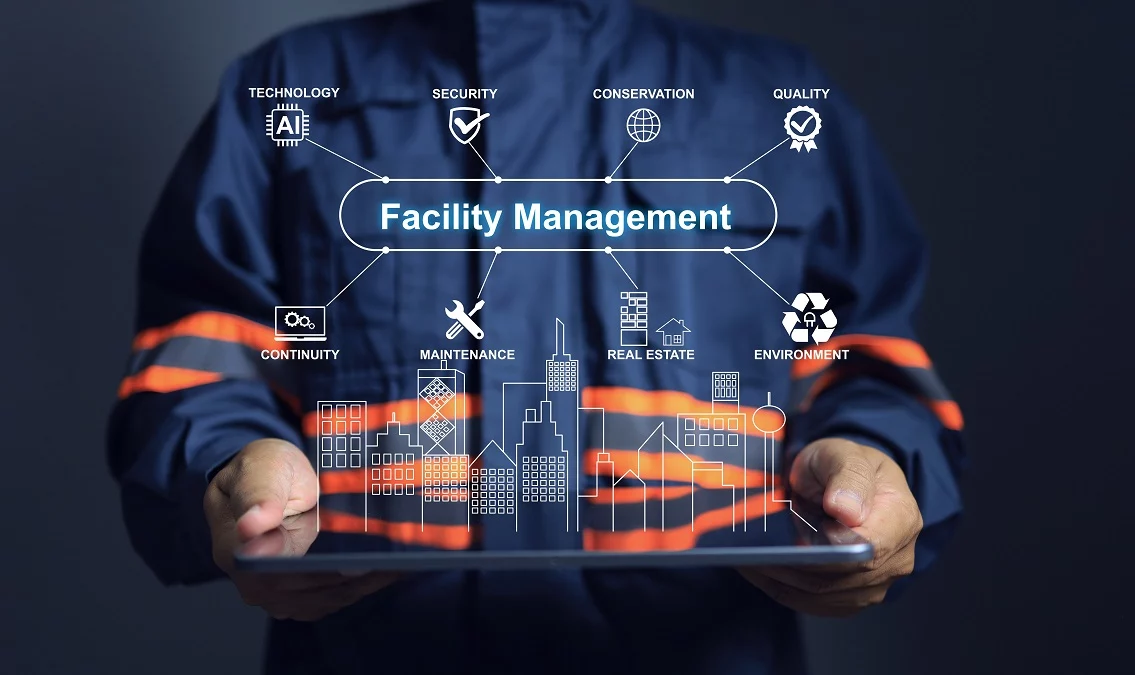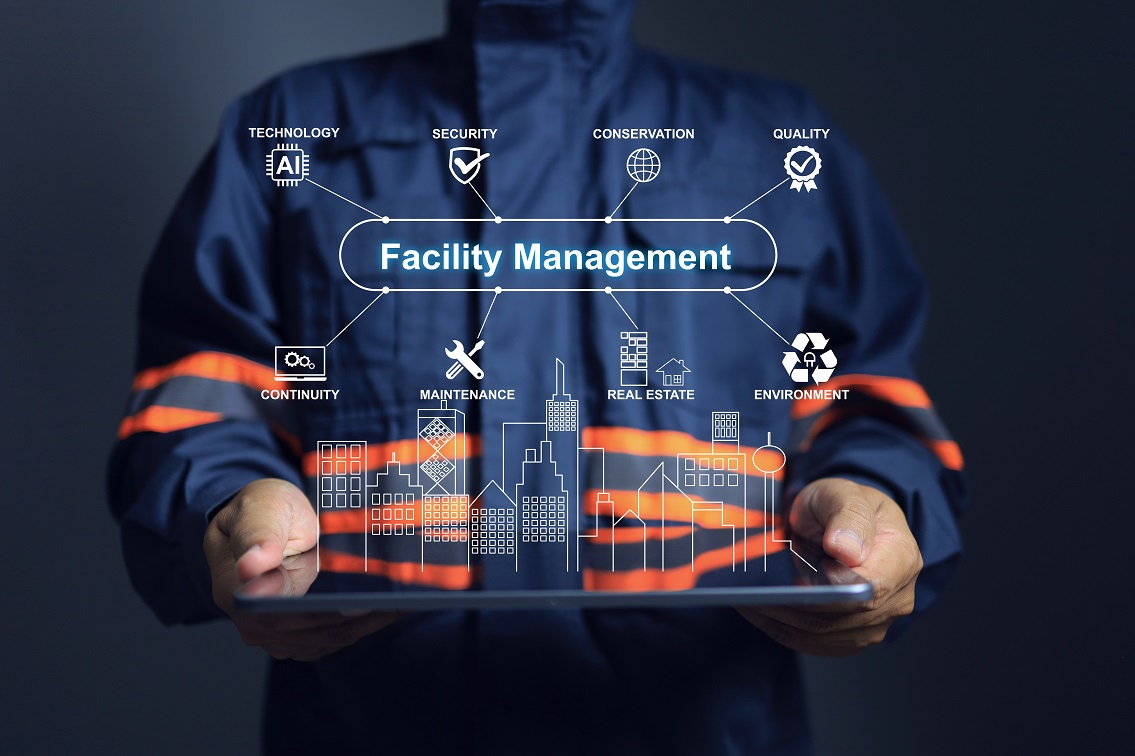How Facility Management Improves Office Efficiency
How Facility Management Improves Office Efficiency
Blog Article
Maximize Effectiveness and Security: Finest Practices in Facility Administration
In today's quickly evolving landscape, optimizing effectiveness and safety in facility management has actually ended up being a vital emphasis for organizations making every effort to boost functional efficiency. By incorporating smart technology, focusing on maintenance methods, and fostering a culture of safety, center managers can considerably boost both efficiency and compliance.
Embrace Smart Innovation
In today's rapidly advancing landscape of facility monitoring, the assimilation of wise modern technology has become a crucial aspect of functional effectiveness and sustainability. Adopting innovative technologies such as the Internet of Things (IoT), expert system (AI), and information analytics can considerably improve facility monitoring practices. These modern technologies assist in real-time surveillance and control of structure systems, making it possible for supervisors to optimize energy usage, reduce functional prices, and improve total safety and security.
Carrying out wise sensing units and automation systems permits precise monitoring of environmental problems, tenancy degrees, and devices efficiency. This data-driven strategy not only notifies decision-making but additionally supports anticipating maintenance, minimizing downtime and prolonging property life. Wise modern technology boosts customer experience by creating flexible environments that react to the demands of owners.
Integrating smart systems additionally advertises sustainability efforts, such as energy-efficient illumination and a/c systems, contributing to lowered carbon impacts. By embracing these technologies, center supervisors can ensure that their procedures remain competitive, resistant, and aligned with contemporary sustainability goals. Eventually, the shift towards clever innovation represents a transformative action in redefining center monitoring for an extra lasting and efficient future.
Prioritize Regular Upkeep

Establishing a routine maintenance routine is essential. This need to consist of routine inspections, maintenance, and needed repair work for all equipment, heating and cooling systems, pipes, and electrical systems. Utilizing a digital upkeep administration system (CMMS) can enhance this procedure, offering monitoring and informs for upcoming maintenance jobs.
Furthermore, fostering a society of accountability amongst personnel enhances the efficiency of upkeep efforts. Educating employees to recognize and report maintenance concerns can lead to aggressive monitoring as opposed to reactive reactions. Furthermore, recording maintenance activities makes certain conformity with security policies and provides valuable understandings for future preparation.
Implement Safety And Security Training Programs
A comprehensive safety training program is vital for fostering a safe and secure workplace in any center - Facility Management. Such programs furnish employees with the expertise and abilities essential to determine threats, carry out security procedures, and respond successfully in emergencies. By prioritizing safety training, companies can significantly minimize the risk of injuries and mishaps, therefore boosting general efficiency
To implement an effective security training program, it is important to tailor the content to the details needs of the facility and its operations. This includes performing a complete risk assessment to recognize possible dangers distinct to the work environment. Training needs to include a range of topics such as appropriate devices use, emergency situation evacuation procedures, and emergency treatment methods.
Moreover, it is essential to involve employees proactively during training sessions. Utilizing real-life scenarios and hands-on presentations can boost understanding and retention of safety and security techniques. Routine correspondence course must additionally be set up to keep he has a good point safety understanding at the center.
Optimize Room Usage
Effective space application is a crucial part of center management that straight affects operational effectiveness and cost-effectiveness. Organizations commonly deal with underutilized or chock-full spaces, bring about inadequacies and increased costs. To enhance room utilization, facility managers need to carry out regular analyses to identify exactly how rooms are presently being used and where enhancements can be made.
Applying adaptable work area designs, such as open office designs or modular furniture, can dramatically boost flexibility to altering requirements. In addition, leveraging technology, such as area monitoring software, can offer valuable insights into occupancy patterns and assist recognize underused areas.
An additional ideal practice is to establish clear zoning within the facility, making certain that different functions are logically set up to lessen disruption and make the most of performance. Moreover, motivating a society of collaboration can cause far better space-sharing practices among groups, consequently enhancing general performance.
Establish Clear Communication Channels
Optimizing area use frequently reveals the need for robust interaction methods within a center. Clear interaction networks are crucial for assisting in efficient cooperation among team, upkeep teams, and management. By establishing these channels, facility supervisors can guarantee that info moves flawlessly pertaining to area use, operational adjustments, and safety procedures.
Applying a multi-faceted interaction strategy-- integrating electronic platforms, such as e-mails and group cooperation tools, with face-to-face communications-- can considerably enhance engagement and details circulation. Normal conferences need to be arranged to talk about recurring tasks, address issues, and share updates. Additionally, creating a centralized info hub, such as an intranet, permits employees to access essential files and announcements conveniently.
Additionally, responses systems are important to evaluate the effectiveness of communication techniques. Motivating personnel to share their understandings can lead to improvements and promote a society of openness. Training programs focused on communication abilities can better encourage staff members to convey information clearly and efficiently.
Eventually, establishing clear interaction networks not just optimizes effectiveness however additionally improves security by guaranteeing that everyone is educated and lined up with the facility's operational goals. (Facility Management)

Final Thought
In conclusion, the combination of clever modern technology, routine upkeep, detailed safety training, maximized room utilization, and efficient interaction channels collectively improves performance and safety and security in facility management. These best practices offer as vital components for reliable center management.
In today's quickly Full Report advancing landscape, taking full advantage of effectiveness and safety in facility management has actually ended up being a crucial emphasis for organizations striving to improve operational performance. By integrating smart technology, prioritizing maintenance protocols, and cultivating a society of safety, facility managers can considerably improve both efficiency and conformity.To implement an effective safety training program, it is important to customize the content to the details demands of the facility and its procedures. By establishing these channels, facility supervisors can guarantee that details streams seamlessly pertaining to room usage, functional adjustments, and security methods.

Report this page